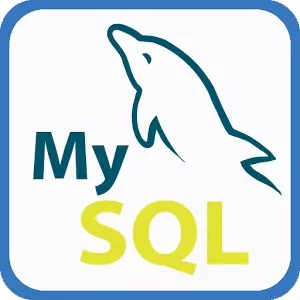
In some scenarios when MySQL handles requests, the server creates internal temporary tables. That is, the table is processed in memory using the MEMORY engine, or stored on disk using the MyISAM engine. If the table is too large, the server may transfer the temporary table in memory to the disk. About derived tables When the main query contains a derived table, or when the select statement contains a union clause, or when the select statement contains an order by clause for one field (a group by clause for another field), in order to complete the query, MySQL You need to automatically create a temporary table to store the temporary result set. This temporary table is created and maintained by MySQL itself and becomes an automatically created temporary table. For automatically created temporary tables, because the performance of the memory temporary table is superior, MySQL always uses the memory temporary table first. When the memory temporary table becomes too large and reaches a certain threshold, the memory temporary table will be dumped. It is an external temporary table. In other words, the external storage temporary table is an extension of the memory temporary table in the storage space. The threshold for transferring a temporary table in memory to a temporary table in external storage is determined by the system variables max_heap_table_size and tmp_t
1. Detailed introduction to MySQL temporary tables and derived tables

Introduction: In some scenarios when MySQL processes requests, the server creates internal temporary tables. That is, the table is processed in memory using the MEMORY engine, or stored on disk using the MyISAM engine. If the table is too large, the server may transfer the temporary table in memory to the disk.
2. sql Advanced Query Operator UNION EXCEPT right and External Connection
##Introduction: SQL Advanced Query Operator union except right and external connection a: union operator The union operator derives a result table by combining two other result tables (such as table1 and table2) and eliminating any duplicate rows in the tables. When all is used with union (that is, union all), duplicate rows are not eliminated. In both cases, every row in the derived table comes from either table1 or table2. sq
##3.sql Common Operation Operators (UNION EXCEPT INTERSECT sp_renamedb)
Introduction: SQL Common Operation Operators symbol (union except intersect left sp_renamedb) Several advanced query operators a: union operator The union operator derives a result table by combining two other result tables (such as table1 and table2) and eliminating any duplicate rows in the tables. When all is used with union (that is, union all), duplicate rows are not eliminated. In both cases, each row of the derived table4.
SQL Server Advanced Content Table Expressions and Review
Introduction: SQL Server advanced content table expressions and review 1. Table expression (1) Use the table as a source or a result set of the query as a source, process the source, and then obtain a new data source and query it. (2) (3) Derived table, using the result set obtained from the table query as a new data source, you need to pay attention to the following points: 1) The derived table must be##5.
Expression of sql table ##Introduction: 1. The essence of the derived table: it is a special child The query (put the query results after from) contains an Order table: Look at the following sql statement: orderid, orderdate, custid ( orderid, orderdate, custid, ROW_NUMBER() ) as t -- the table name must be aliased
##Introduction: 1. The essence of the derived table: it is a special child The query (put the query results after from) contains an Order table: Look at the following sql statement: orderid, orderdate, custid ( orderid, orderdate, custid, ROW_NUMBER() ) as t -- the table name must be aliased
6. CTE statement structure and CTE recursive query in SQL SERVER
Introduction: CTE statement structure and CTE recursive query in SQL SERVER CTE Statement Structure A common table expression (CTE) can be thought of as a temporary result set defined within the execution scope of a single SELECT, INSERT, UPDATE, DELETE, or CREATE VIEW statement. CTEs are similar to derived tables, in that the concrete tables are not stored as objects and are only valid during queries.
7 with the derived table. Unless TOP or FORXML is also specified, the ORDER BY clause is used in views and inline functions
简介:报错: 除非另外还指定了 TOP 或 FOR XML,否则,ORDER BY 子句在视图、内联函数、派生表、子查询和公用表表达式中无效。 只要我们在嵌套子查询视图里面加入: top 100 percent 即可 例如: select * from (select top 100 percent * from tb order by col des 简介:除非另外还指定了 TOP 或 FOR XML,否则,ORDER BY 子句在视图、内联函数、派生表、子查询和公用表表达式中无效 SQL 不同于与其他编程语言的最明显特征是处理代码的顺序。在大数编程语言中,代码按编码顺序被处理,但是在SQL语言中,第一个被处理的子句是FRO 9. oracle 子查询 简介:子查询就是嵌套在查询语句内的查询,后续查询可以使用先前查询的结果,用以代替暂存表或变量存储先前查询结果。 子查询的外层为较高的层级,以下称之为“主查询”。派生表是子查询的一个特殊情况,他是应用于FROM子句中的 SELECT完整命令,以数据表别名引用 简介:mysql派生表和视图的性能
The above is the detailed content of Detailed introduction to derived tables. For more information, please follow other related articles on the PHP Chinese website!




